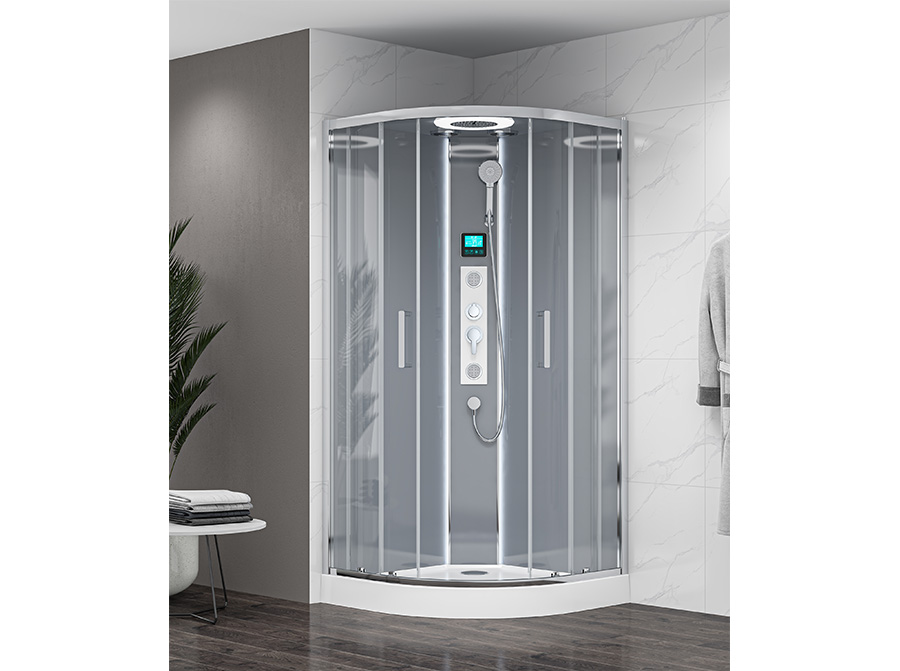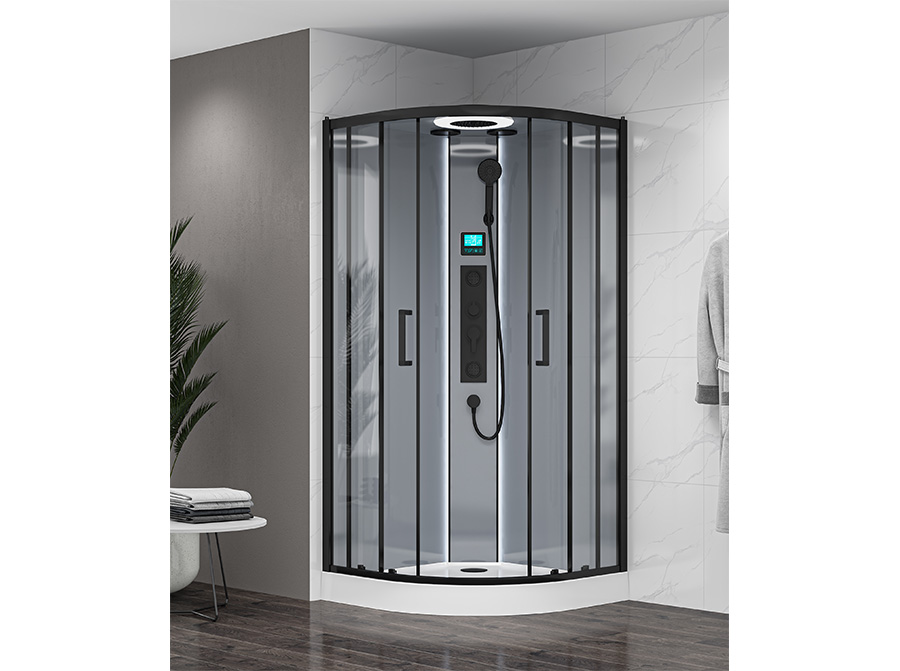Quadrant shower cabin low tray aluminum profile frame
Do You Have Any Question?
We take your suggestions and questions very seriously. If you have any questions about the goods and services provided by Canstar, please fill in the form below. We will reply you as soon as possible.
-
In recent years, bathroom design has seen a strong shift toward minimalism and functionality. Among the trending innovations, the K767 Minimal Slim Sliding Glass Shower Door stands out for its sleek d...
READ MORE -
What Are Bathroom Pivot Glass Shower Doors? Bathroom Pivot Glass Shower Doors are a modern bathroom solution that combines functionality, elegance, and durability. Unlike sliding or hinged shower door...
READ MORE -
Bathroom Sliding Glass Shower Doors Basics: Design, Advantages, and Optimization The selection of Bathroom Sliding Glass Shower Doors represents a critical design decision in modern bathroom renovat...
READ MORE -
The Ultimate Guide to Choosing Your Perfect Shower Enclosure Stepping into a shower enclosed by crystal-clear glass is an experience that transforms a daily routine into a moment of luxury. Glass Simp...
READ MORE
Are You Choosing the Right Quadrant Shower Cabin with a Low-Tray Aluminum Profile Frame?
For those looking to upgrade their bathroom, a quadrant shower cabin offers a sleek, space-saving, and modern solution. Unlike traditional rectangular or square enclosures, the curved front of a quadrant cabin fits neatly into a corner, making it a perfect choice for both small and large bathrooms. The design is not only aesthetically pleasing but also highly functional. While many elements contribute to the overall quality and durability of a shower cabin, the aluminum profile frame and low tray are two of the most critical components. Understanding the science behind these parts is essential for making an informed decision.
The Science Behind the Low-Tray Design
The low-tray design is a key feature of modern shower cabins, and its benefits are rooted in both engineering and user experience. Traditionally, shower trays were thick and bulky, creating a high step to get into the enclosure. This not only looked cumbersome but also posed a significant accessibility issue, especially for children, the elderly, or people with mobility challenges.
A low-profile tray, typically 25mm to 40mm in height, sits much closer to the floor. This minimal step-in height greatly enhances safety and ease of use. But how is this achieved without compromising on structural integrity and water drainage? The answer lies in advanced manufacturing and material science.
Modern low trays are often made from high-quality materials like acrylic or stone resin. Acrylic is lightweight, warm to the touch, and easy to mold, allowing for complex and efficient drainage channels to be integrated directly into the tray’s design. Stone resin, a composite of crushed stone and a polymer resin, offers a much heavier and more rigid feel. Its density and strength prevent flexing, ensuring the tray remains perfectly level over time, which is crucial for preventing leaks.
The drainage system in a low tray is a marvel of hydraulic engineering. To ensure efficient water removal despite the shallow depth, a high-flow waste trap is used. These traps are designed to handle a large volume of water quickly, preventing any pooling on the tray surface. The outlet is often positioned slightly off-center and includes a sloped surface leading to it, ensuring every last drop of water flows away. This combination of material and design science makes the low tray a superior choice for both aesthetics and functionality.
The Role of the Aluminum Profile Frame in Durability and Aesthetics
The aluminum profile frame is the skeleton of the quadrant shower cabin, providing the structural support for the glass panels and the door mechanism. The choice of material—aluminum—is not arbitrary; it’s a perfect blend of strength, lightweight properties, and resistance to corrosion.
Aluminum, specifically T5 or T6 grade aluminum alloy, is the preferred material for these profiles. These alloys are known for their high tensile strength and durability. They undergo a process called extrusion, where heated aluminum billets are pushed through a die to create the desired cross-sectional shape. This allows for complex and precise profiles that can integrate features like channels for seals, grooves for screws, and aesthetic curves.
After extrusion, the profiles are often treated with a surface finish to enhance their appearance and resistance to corrosion. The most common finishes are anodizing and powder coating.
- Anodizing is an electrochemical process that creates a thick, protective oxide layer on the aluminum’s surface. This layer is exceptionally hard, scratch-resistant, and provides a barrier against moisture and the chemicals found in cleaning products. Anodized frames maintain their metallic sheen over time and are available in various shades like satin silver or polished chrome.
- Powder coating involves applying a dry powder—a mixture of finely ground plastic and pigment—to the aluminum profile. The profile is then baked in an oven, where the powder melts and fuses to form a smooth, durable finish. This finish is highly resistant to chipping, fading, and rust, and is available in a much wider range of colors, such as matte black or a classic white.
The design of the frame itself is also critical. A well-engineered quadrant frame includes subtle but vital features. For instance, the vertical profiles that connect to the walls often have an adjustment range, typically 20mm-30mm, to accommodate uneven walls. This allows for a perfect, watertight installation even in older homes. The horizontal profiles that support the glass and doors are designed to be rigid, preventing any flexing or movement that could compromise the integrity of the enclosure.
Furthermore, the integration of seals and magnetic strips into the profile design ensures a tight seal. High-quality seals, made from PVC or silicone, fit into specially designed channels within the aluminum profiles. This prevents any water from leaking out of the cabin, keeping the bathroom floor dry and safe. The magnetic strips embedded in the vertical door profiles ensure a secure and satisfying closure every time.
Choosing a quadrant shower cabin with a low-tray aluminum profile frame is about more than just aesthetics; it’s a decision based on sound engineering and material science. The synergy between the low-profile tray’s efficient drainage and the aluminum frame’s robust, corrosion-resistant structure results in a product that is safe, durable, and a pleasure to use for many years to come. Manufacturers like Hangzhou Cleandell Sanitary Ware Co. Ltd. are at the forefront of this innovation, utilizing high-quality materials and precise manufacturing techniques to create shower solutions that meet the highest standards of safety, durability, and design.

 English
English Français
Français Español
Español


